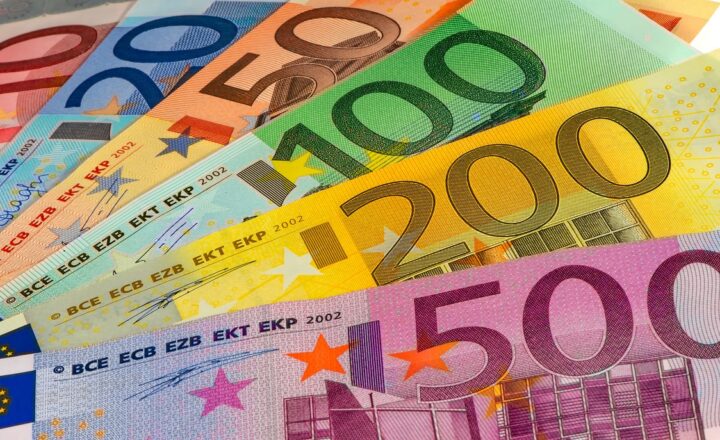The Secrets Behind Airline Seat Prices: Why Two Seats Are Never the Same Price
November 11, 2024

Airline ticket prices are one of the most discussed aspects of travel; they can transform a dream vacation into an unattainable expense. Yet, one of the most perplexing features of air travel is the nature of seat pricing. Ever wondered why two seats on the same flight can have drastically different prices? Understanding the complexities behind airline seat prices can help you make informed decisions when booking your next trip.
1. The Basics of Airline Pricing
Airlines use a variety of strategies to set their prices, driven by demand, competition, and operational costs. In this section, we’ll delve into how these factors contribute to the price you see when you’re booking a flight.
– Dynamic Pricing: Airlines utilize dynamic pricing models where prices fluctuate based on demand and availability. As seats fill up, prices may increase.
– Booking Class Variations: Different booking classes–such as economy, premium economy, business, and first class–offer various levels of service and comfort, consequently affecting the price of the ticket.
– Time of Purchase: Timing can significantly impact prices. Booking earlier can often yield better rates, while last-minute fares may increase due to limited availability.
Understanding these basics gives insight into why some passengers pay considerably more than others for what seems to be the same seat.
2. The Role of Revenue Management
Airlines rely heavily on revenue management systems that analyze enormous amounts of data to maximize profits. Here are the critical mechanisms that these systems use:
– Advanced Algorithms: Revenue management utilizes algorithms that track pricing across routes, seasons, and historical data. The result is a constantly changing fare structure designed to sell as many seats as possible at the highest possible prices.
– Seat Inventory Control: Airlines divide their available inventory (or number of seats) into different fare classes. As one class sells out, the pricing shifts for the remaining seats to the next available class, which is typically more expensive.
By controlling the availability of each fare class and adjusting prices based on real-time data, airlines can optimize their revenue.
3. Key Factors Influencing Seat Pricing
Several external and internal factors contribute to the variation in seat prices:
– Seasonality: Prices often increase during peak travel seasons, such as summer vacations, holidays, or major events. Conversely, they may dip during off-peak times when fewer travelers are flying.
– Competition: The level of competition on a given route can heavily influence prices. If multiple airlines offer flights between the same two cities, they may compete on cost, driving prices down.
– Flight Timing: The time of day also plays a role. Early morning and late-night flights may be cheaper than flights during peak business hours.
Understanding these factors helps passengers navigate when and how to purchase tickets to secure the best possible prices.
4. The Impact of Booking Channels
Where and how tickets are purchased can also influence pricing. Here are some insights on booking channels:
– Direct Airline Websites vs. Third-Party Apps: Prices can differ between an airline’s own website and third-party booking sites due to service fees, general pricing strategies, or exclusive deals.
– Fare Alerts and Comparison Tools: Utilizing fare monitoring tools can provide alerts when prices drop, helping travelers snag lower fares.
The booking channel choice significantly affects the total price paid for a ticket.
5. How to Score the Best Seat Deals
Now that you understand how airlines determine prices, let’s explore actionable tips on how to find the best deals on flights:
– Be Flexible with Dates: If you can adjust your travel dates by even a day or two, you can often find dramatically cheaper fares.
– Use Incognito Mode: Airlines may track your browsing habits and raise prices based on your search history. Searching in incognito mode can help you avoid this.
– Set Fare Alerts: Many travel websites and flight services allow you to set alerts for specific routes, notifying you of price drops.
– Consider Nearby Airports: Sometimes flying into or out of a nearby airport can save you significant money.
By implementing these strategies, travelers can take a more active role in finding the best airline prices available.
6. Psychological Pricing Techniques
Airlines also employ psychological strategies to influence purchasing decisions, including:
– Price Point Anchoring: Offering a high-priced ticket alongside cheaper options can make the latter seem more affordable, enticing customers to choose a less expensive option they might have otherwise overlooked.
– Limited-Time Offers: Flash sales or limited-time fares create a sense of urgency, pushing potential customers to book quickly for fear of missing out.
– Easy Comparisons: Presenting multiple fare options enables easy comparisons, helping consumers feel more satisfied with their choice.
These pricing techniques reflect the airlines’ understanding of consumer psychology and their ability to manipulate perceptions around value and urgency.
Conclusion
Understanding the secrets behind airline seat pricing not only demystifies why two seats on the same flight can have wildly different prices but also empowers travelers to take control of their booking journey. With knowledge of how dynamic pricing works, the impact of competition, and the importance of booking channels, you can make more informed travel decisions.
Utilizing smart strategies like flexibility in travel dates, setting fare alerts, and discerning the psychological techniques employed by airlines can save you significant money on your next adventure. Now, as you prepare for your flight, you can navigate the world of airline prices with confidence, ensuring you get the best deal possible for your chosen journey.





